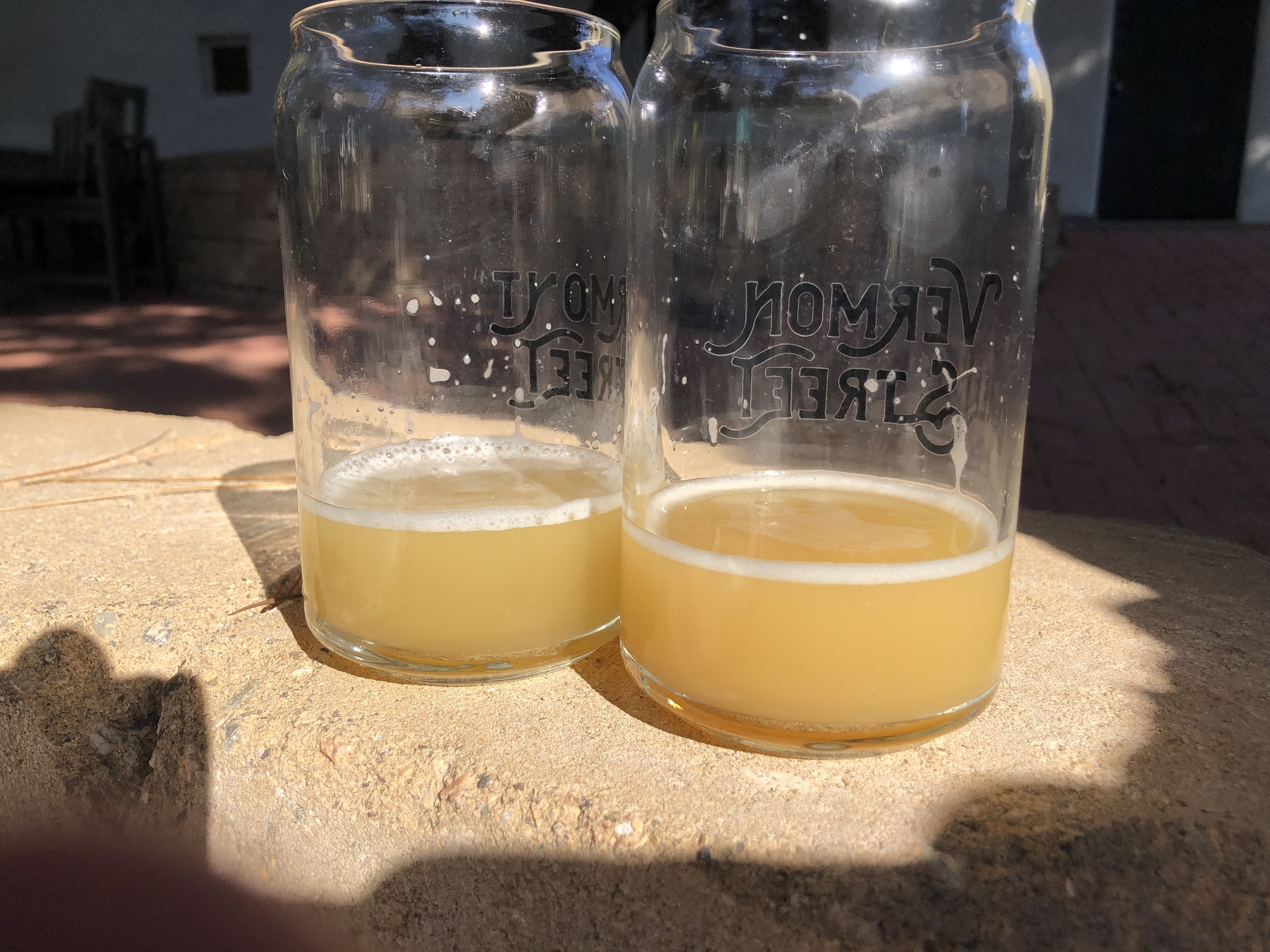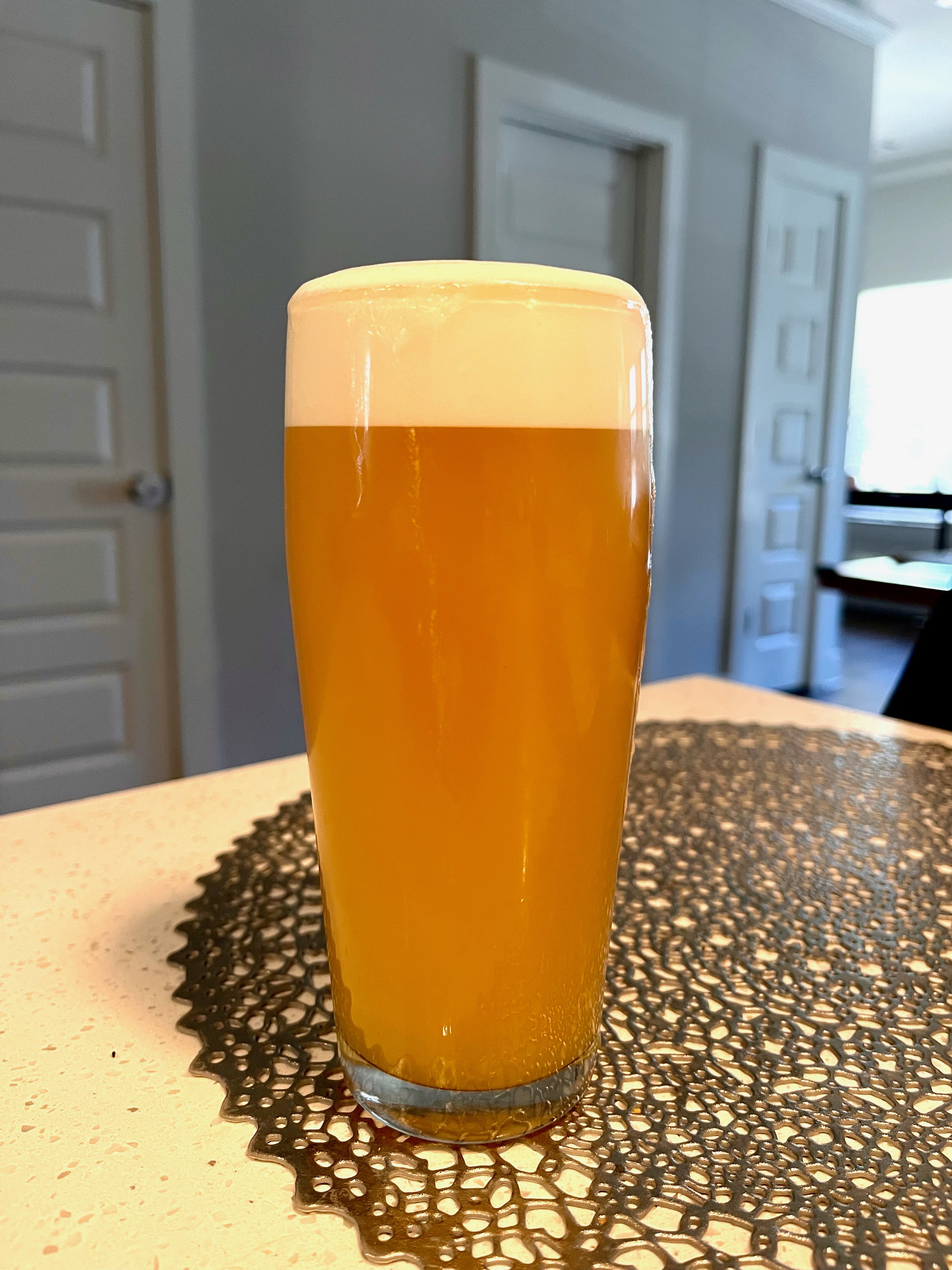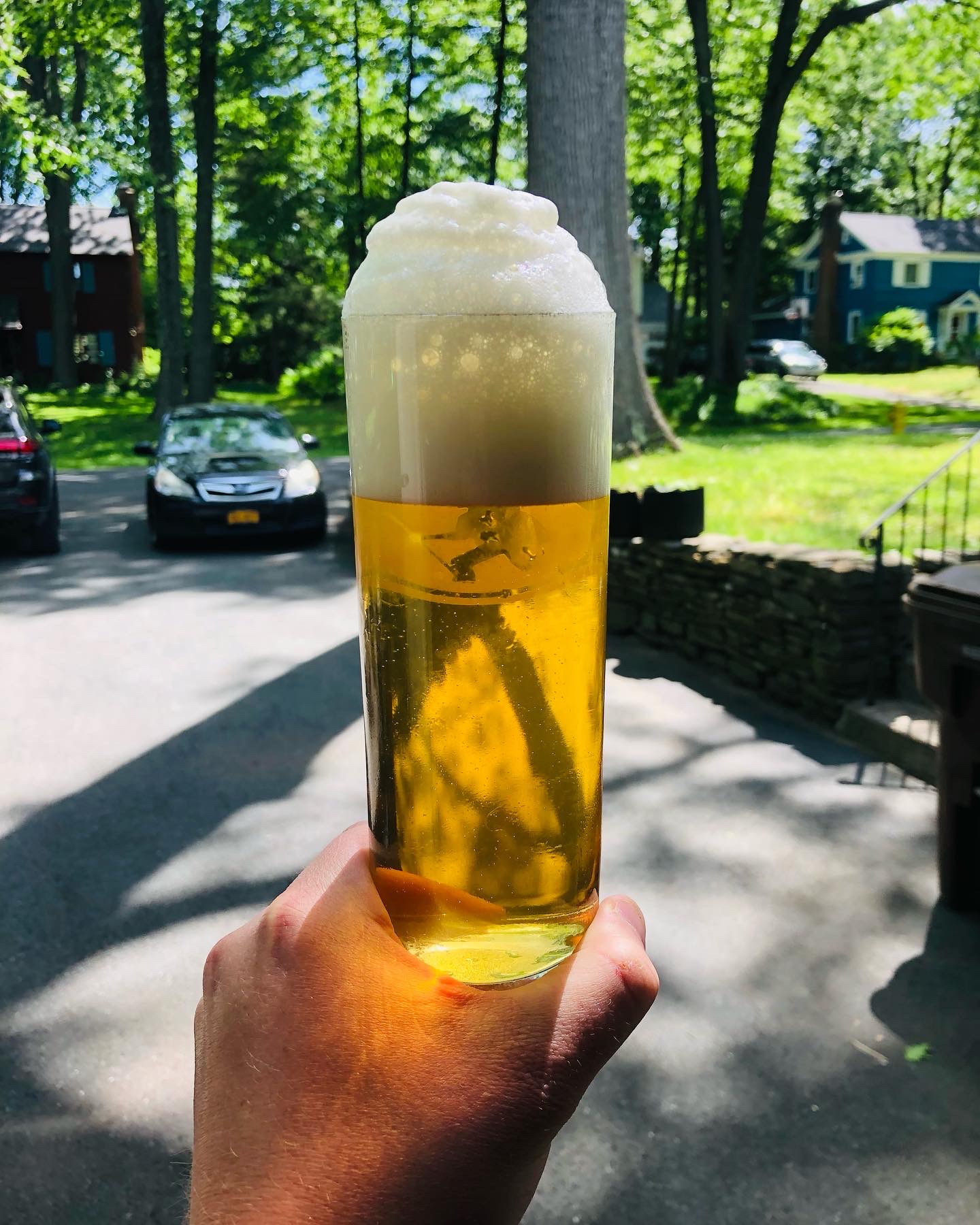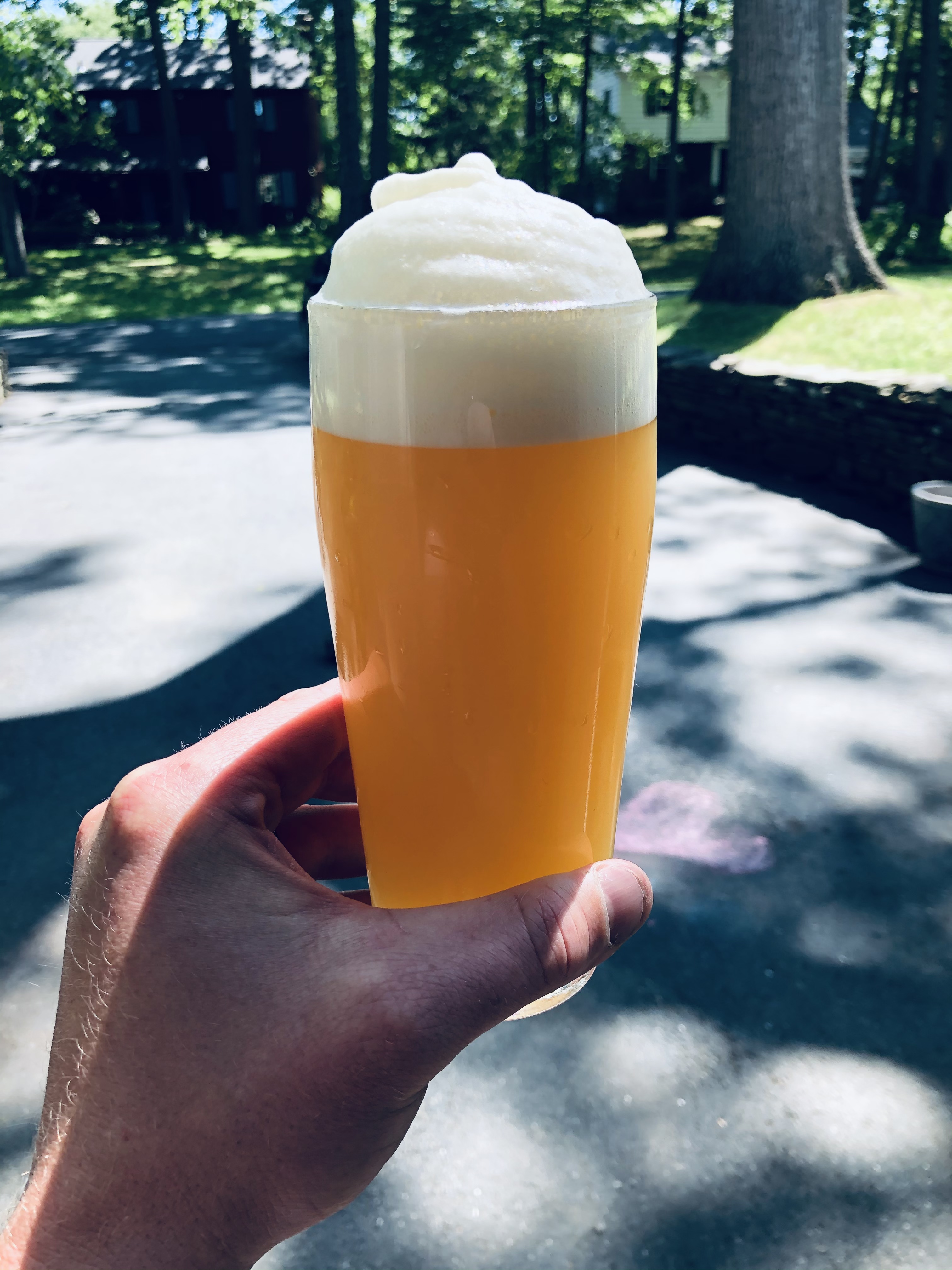Dgallo
Instagram: bantam_brews
What does your hop schedule and dosing look like for this recipe?
4 oz in whirlpool @180-185 *f (while your pasteurizing)
8 oz dryhop for 48 hours after dropping yeast.

What does your hop schedule and dosing look like for this recipe?
That's for T90 pellets?4 oz in whirlpool @180-185 *f (while your pasteurizing)
8 oz dryhop for 48 hours after dropping yeast.
Yes, just don't decant them. If you build to 2L, save 500ml of that and pitch the 1500ml into your wort. make sure its well mixed before you pour off what you intend to save. You should never really be decanting A24 cause the sacc trois is less flocculent than the conan portion. decanting will always select the conan over the sacc in multiple generations.Anybody overbuild starters with a24? I'm concerned that the diastic traits of the combo will alter the balance over time so I'm thinking it's not a good idea.
For the whirlpool yes. For dryhop you could do t45 and t90 if you want. Like 5 oz t90 3 oz t45 or really any combo you like. I like about 50/50 or 60/40, t90 to t45 for dryhoppingThat's for T90 pellets?
Would you still shoot for 8 oz if you were only using T90 in the dry hop? Or would you bump it up?For the whirlpool yes. For dryhop you could do t45 and t90 if you want. Like 5 oz t90 3 oz t45 or really any combo you like. I like about 50/50 or 60/40, t90 to t45 for dryhopping
















For the whirlpool yes. For dryhop you could do t45 and t90 if you want. Like 5 oz t90 3 oz t45 or really any combo you like. I like about 50/50 or 60/40, t90 to t45 for dryhopping
There’s a flavor that you get from t90 that’s great that you don’t get from cryo. Don’t get me wrong, I love cryo,specifically LUPOMAX. It’s great for a bright pop of the specific variety but doesn’t have the depth I’m looking for aloneInteresting. I figured the t45 type would be the way to go for dry. Is it too much of a good thing where you feel that some t90 flavors are lacking?
I've brewed a ton of beer but very few NEIPA's so I'm always reading this thread and learning what I can for the next ones.
All depends on your equipment and if you can minimize o2. Try both ways and see which you perfer. Like I noted above. Cryo is great and has its place but it’s not a stand alone for me in an ipaWould you still shoot for 8 oz if you were only using T90 in the dry hop? Or would you bump it up?
O2 has been limited. I've been fermenting, dry hopping, and serving from a single keg. Haven't been able to notice a difference between 8oz of T90 dry hop vs 12oz of T90 dry hop. I'm planning on using two kegs next time. Fermenting in one, and then transferring, dry hopping, and serving from the other. I'm hoping there will be better contact between the beer and hops when doing a closed transfer, as opposed to pouring the hops directly on top of the beer (as I have been).All depends on your equipment and if you can minimize o2. Try both ways and see which you perfer. Like I noted above. Cryo is great and has its place but it’s not a stand alone for me in an ipa




I would say the 19% SpeltNice write up, you work hard for that beer! The foam looks incredible, dense meringue. What do you attribute that to?
I would say the 19% Spelt
I’m a scientist - reproducibility is paramountNice write up, you work hard for that beer! The foam looks incredible, dense meringue. What do you attribute that to?
Takes more than just high protein grainbill for great head formation and retention.I would say the 19% Spelt

That’s certainly helps clarify and create foam positive proteins. But great head retention and formation is a combo of thingsI tried slow pour but the head was so dense… step mash IMO is what gives the texture at this scale

What does your step mashing look like for NEIPAs?Takes more than just high protein grainbill for great head formation and retention.
This is something I really try to target. Step mashing with a mashout. High protein malted grain incorporated (wheat or spelt, oats work too but need to find the sweet spot) getting a good hot/cold break, transferring as clear of wort as possible to the fermenter, hopping rates and extended cold crash. Clarity of beer into the keg (not clear as is brilliant but clear as in free of particulate. I know some say you need to naturally carbonate but I force carb and have never seen a difference. Also, a clean glass, shape of the glass, and Pouring style makes a huge difference. Look into the slow pour method, that and the recess above will have you staking heads like this View attachment 783872
Also, what does your grain bill look like to get that brilliant orange color?That’s certainly helps clarify and create foam positive proteins. But great head retention and formation is a combo of things View attachment 783875
I do a very simple step mash.What does your step mashing look like for NEIPAs?
Also, what does your grain bill look like to get that brilliant orange color?
what's your hot side set up? Do you use a 3v system? I'm looking to upgrade my original propane / kettle / cooler based system to electric with temp control to be able to step mash and control tighter temp ranges. Any advice is appreciated.I do a very simple step mash.
-146*f for 40
-158-160*f 30
-170* mashout 10
About;
70% - Basemalt
27% - high protein (malted oats, spelt, wheat alone or in combo)
3% -honey malt (varies a little with og)
I actually have an igloo cooler mash tun. I will mash in with a thicker mash and then over mash a bit with the second step. So here would be a simple run through of what I dowhat's your hot side set up? Do you use a 3v system? I'm looking to upgrade my original propane / kettle / cooler based system to electric with temp control to be able to step mash and control tighter temp ranges. Any advice is appreciated.
Very cool process. Thanks for sharing!I actually have an igloo cooler mash tun. I will mash in with a thicker mash and then over mash a bit with the second step. So here would be a simple run through of what I do
- Mash 4 gallons at first step
-heat another 1.5 gallons to around 180*f.
-before I add that I’ll pull a gallon of wort out of the mash tun and put it in a separate pot.
-I then add that water and see where my mash hits. If im too hot I’ll add the gallon of wort back until I hit the right temp. If it’s too cool l, I’ll heat that gallon to about 170 and add it back until hit the temp(or close enough)
-to mash out I drain the mash turn and raise the wort above 170 (denaturing the enzymes) and run it back through the grain bed and then do a quick sparge with the proper volume.
It’s not a perfect method by any means but it work well enough with the equipment I have.
Not normal. If anything, step mashing increases yield... Can you confirm that your thermometer/hydrometer/scale (to measure grain) are calibrated? I would be surprised if it was the 20 minute difference in total mash time.So I tried a step mash process this time for fun and lost points on my mash efficiency. I normally mash at 152-154 for 90 minutes and can hit my numbers. This time I did Dgallos suggested 146 for 40min and then 158 for 30 minutes and was way low on my pre boil gravity. I ended up with 1.052 instead of my target of 1.068. Obviously it’s an east fix to just adjust the mash efficiency numbers, but Im curious to know if that’s normal? Or did I do something wrong? Nothing else was changed. Crush size, water chemistry and grain bill was the same from my previous brew which was 92% mash efficiency without the step mash process. Thoughts?